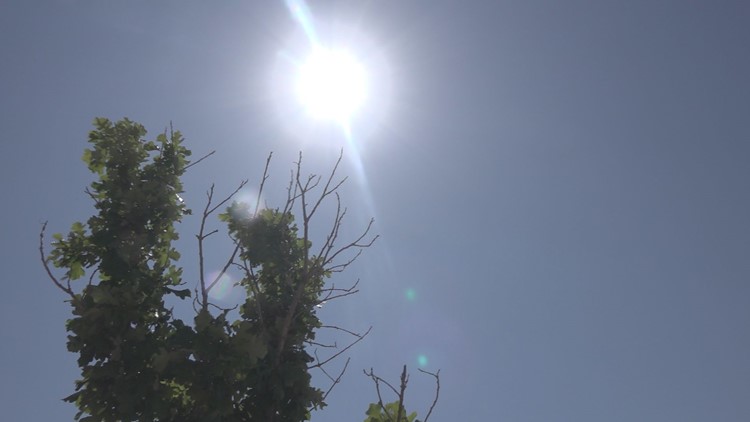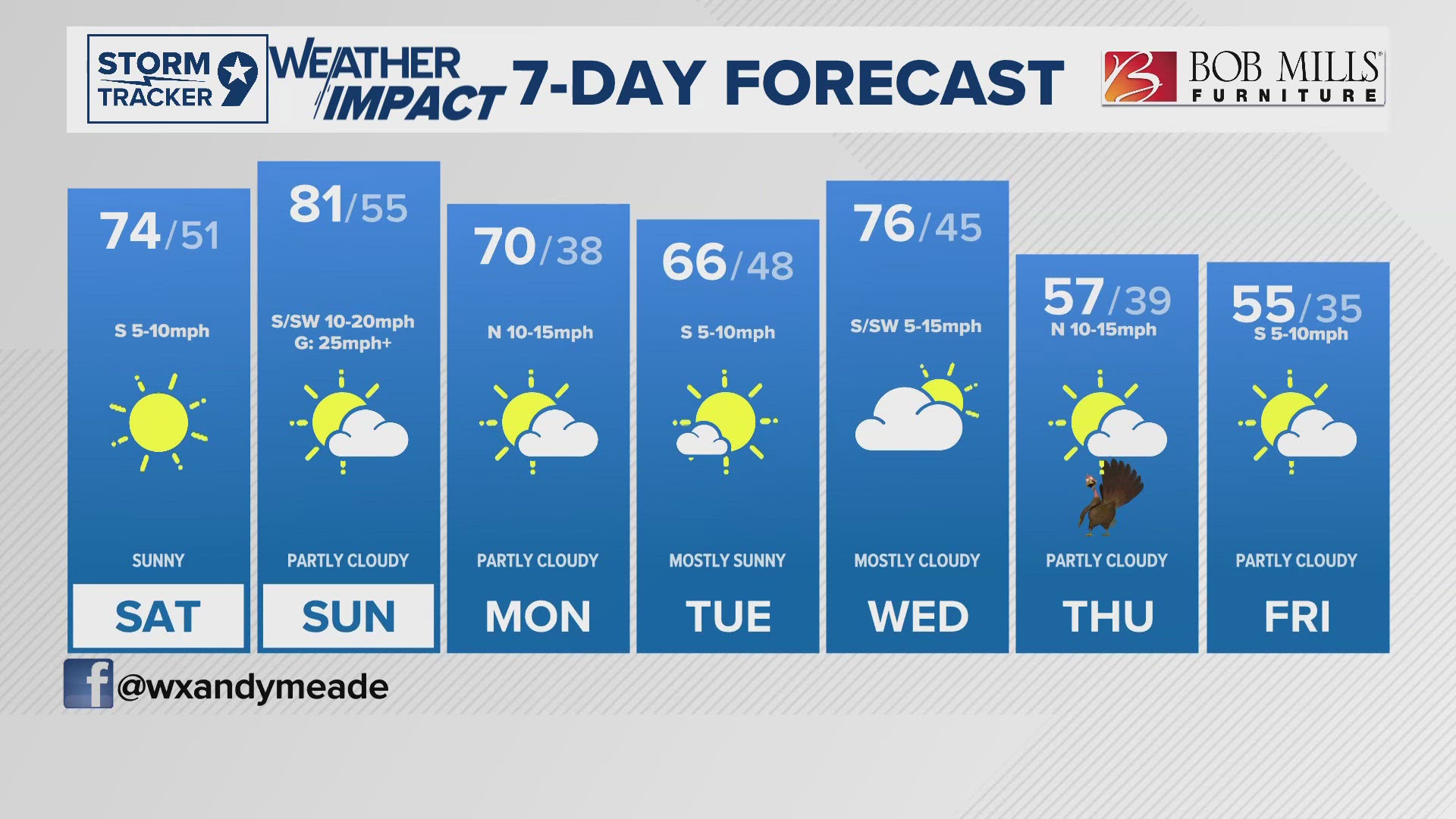MIDLAND, Texas — Temperatures have skyrocketed each afternoon over the past few days. Just east of us in San Angelo, the temperature rose all the way up to 113 degrees Fahrenheit on Tuesday afternoon, creating a new all-time record high for the city.
We likely won't get quite that hot here in Midland-Odessa, but it will still get warm enough to have people question the physical limitations of just how high of a temperature we can achieve.
It's not too uncommon to see temps reach around 110 F here in the summer. However, it becomes increasingly difficult to heat up beyond that point.
Conditions have to be near perfect for us to hit 115 F. In fact, the record high temperature for Midland is 116 F, set back on June 27, 1994. The state record is 120 F, which was achieved in Monahans the following day on June 28, 1994.
Highs in that temperature range are rare because conditions must be perfect.
In order to see that kind of heat, we need a lot of incoming solar radiation. The max allowable amount occurs toward the end of June, when the sun rises highest in the sky and the days are longest, with the most hours of sunlight. This allows plenty of time for the sun to do its work in heating us up.
We get even warmer when there's little to no clouds in the sky. Clouds have a high albedo and act as a shield to reflect incoming sunlight back into space. We are often several degrees cooler on days with overcast skies compared to days in which there are no clouds.
Another factor that determines how warm we get is how dry the air is. Dry air, composed of nitrogen and oxygen, heats up about 4 times as quickly as liquid water. So, when you start adding humidity (aka water vapor) to the air, the heat capacity begins to rise. That is, it takes more energy to raise a unit of matter by a unit of temperature.
So dry air, or the absence of water, is a critical component for allowing temperatures to approach their theoretical maximum.
High atmospheric pressure is another important factor to consider. Pressure and temperature are directly proportional. As pressure increases, temperature begins to increase and vice versa due to a simple rule of physics known as Gay-Lussac's Law.
This can be observed not just in the atmosphere, but in the home as well. A good example is when you expose a can of aerosol to heat, the pressure inside the can increases, sometimes so much that the can may explode. This is why warning labels may say to keep it at room temperature.
In meteorology, the impact on temperature from high pressure is called compressional warming. Along with high solar radiation and dry air, compressional warming is a necessity for letting us reach our maximum allowable high temperature.
Although that figure isn't precisely known, it can't be too much warmer than the record of 116 F. The reason being is that there just isn't a whole lot more you can do to help heat us up other than the factors mentioned above.
In order for temperatures reach over 110 F, conditions really do need to be close to perfect in terms of having the minimum allowable water content in air and having the maximum allowable pressure and solar radiation.
And because there's a limit to how favorable conditions can be, so too is there a limit to how high temperatures get. That limit appears to be around 115 F. It gets exponentially harder for temps to rise after about 100 F, which is why we often see high temps plateau like they are now, at about 109 F.
With our current heat wave, almost everything is perfect — the air is extremely dry, the atmospheric pressure is high and the days are long.
However, there is one thing holding us back from being even warmer, and that is the clouds. There has been high cirrus clouds in place over the past few days, which have kept highs down slightly.
By the time the clouds dissipate, one of the other factors will likely move out of the realm of perfection, whether it be humidity or pressure. It's rare to have everything lined up perfectly at once, which is why temperatures above 110 F are rare. So, for this reason, it is unlikely, but still possible, that we will see temperatures warm even further.



